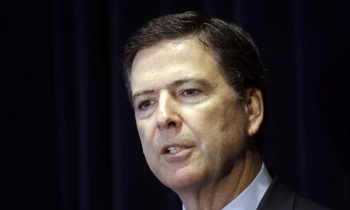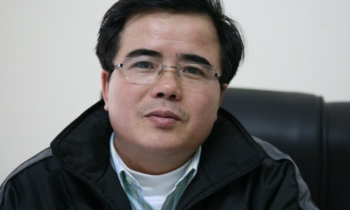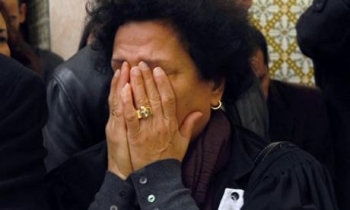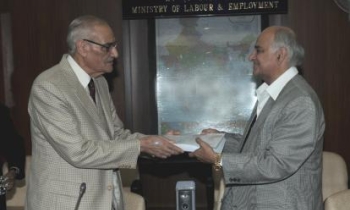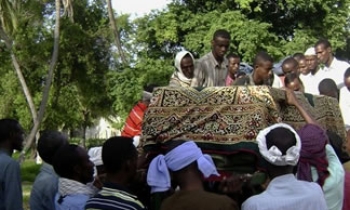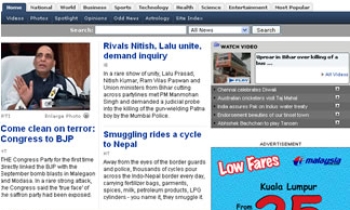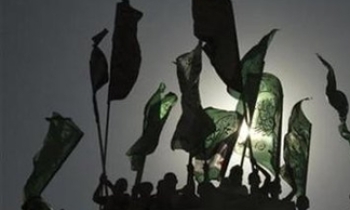Within minutes of the first shots being fired at the CST railway station, commenced a non-stop television coverage of the 62-hour high voltage drama in Mumbai that shocked the world. Reporters flooded the four conflict zones, and developments were telecast as they unfolded.
As people stayed glued to television sets, the gunbattles, the deaths, the widespread public anger made the Mumbai terror attacks the biggest thing ever to have been witnessed in Indian televison history. At least, in terms of numbers.
“I think I was glued to my television set for nearly 50 out of those 60-odd hours of coverage,” says Meesam Raza, an executive producer with Reliance Broadcasting in Mumbai.
Several channels in different languages were giving field updates on the operations being carried out by commandos. However, it were the Hindi news channels that saw a whopping 153 per cent increase in the time spent on November 27 alone. English news channels saw an increase in time spent of 24 per cent in comparison to the average times spent by viewers during earlier four Thursdays.
Viewers were tuned into their preferred channels for the manner in which they covered the attacks. “CNN-IBN had better field updates whereas TimesNow had more discussions and debates. So switching between these two channels provided a variety,” recalls Sankalp Pradhan, an aspiring filmmaker. “It was sad and shocking news, and I was too concerned about it. I was up till odd hours watching NDTV to get the updates,” shares Rahul Khurana, an entrepreneur from Nagpur.
The overwhelming tragedy of the event made the people restless enough to keep themselves from witnessing each and every visual that the active television media provided them with. “I was watching the news till almost 2 a.m. feeling anxious, frustrated and irritated at every moment thinking that such breach of security can happen. It was unimaginable,” says Abhinav Nanda, a commodities stock broker from Delhi.
“The incident was particularly different because it lasted for over 60 hours. It wasn't something that happened and then was being covered by the channels. It was an active ongoing attack, which is far more terrorising that a bomb blast. What might happen is unknown that jolts people out more than something that’s already happened,” contends Serena Menon, a journalism student from Mumbai.
“I was glued to NDTV 24/7 since that it’s one of the few decent channels that showed everything that happened without the drama,” says Nanda. Even Rashmi Kumar, a media student from Chennai agrees with Abhinav, “NDTV gave us the raw data unlike other channels which spent more time giving sound effects to a few of their videos which I felt was unnecessary considering the circumstances.”
There were debates of possible blackouts of telecasts at the time arising out of fears that associates of the terrorists might take advantage of the comprehensive coverage and help foil the flushout operations that were under way. “It was a sensitive operation and media should have taken some social responsibility. I think the fact that they created so much hype about Hemant Karkare and others and showed them discussing their plan of action, might have resulted in what happened,” argues Pradhan.
Hindi channel Aaj Tak kept its audiences hooked. On November 27, just a few hours after the initial attacks, Aaj Tak’s Gross Rating Point (GRP) reached 28.8 which were much higher compared to the average GRP of 6.3 that it had gained in earlier four Thursdays. The GRP of Aaj Tak increased further to 36.8. However, Siddharth Chadha, a documentary filmmaker from Bengaluroo is not too happy with the drama the channels are said to have created. “I think it was ridiculous. The whole of media was, and still is caught in a nationalistic frenzy. There was no argument presented, no one in the media even spoke of negotiations and they simply towed the line of the government.” Chadha even goes to say that the sole focus was on elite hotels and the people held hostage there. No one went out of their way to report from CST or Cama Hospital or Metro Cinema where a large number of people were gunned down by the terrorists.
Kumar, however, has no issues about the amount of exposure the attacks were given. “This was definitely an attack of a larger degree, which probably justifies the amount of air space it got. Every minute something was shown. The public was terrified about what was happening but at the same time we, in some other cities wanted to know what was exactly happening in Mumbai.”
The concurrent reporting of Operation Tornado helped viewers get a sense of being present there and witnessing the events for themselves. “Even business channels like CNBC-TV18 and UTVi were featuring different updates on the attacks. So when I switched them on the next day to see how the markets were faring, I was able to see both at the same time,” says Nanda.
Viewers had mixed feelings about the content and the style. “Watching every channel gave a sense that they were only doing it to hike TRPs much like ‘trying to stir when the tide is high’. They were not logically going anywhere or to anything and they were imposing opinions which according to my limited understanding is not that what they are supposed to do. They should simply provide facts,” argues Shweta Velkar from Mumbai. But based on her experiences, Kumar points out, “We wanted complete details and the media gave it to us. Maybe for a Mumbaikar, it must have felt like being blown out of proportion but for an outsider, like me from Chennai, we needed those visuals, even the slightly gory ones to better understand the extent of events taking place.”
Kumar, however, mentions a few instances concerning reporters which she felt were unacceptable. “Barkha Dutt (of NDTV) became a bit emotional on camera which quite frankly we didn’t want to see. We understand it was a horror, a nightmare, but one has to be objective then. Not emotional on camera itself. Just bottle it up till you’re done with your on-air time.”
Chadha watched both NDTV and CNN-IBN for the first 16 hours but became fed up soon and switched them off. He feels that anchors had no information and kept ranting on. He feels the channels acted as if no news was happening around the world, Former Indian Prime Minister VP Singh had passed away the same day but none of the channels even presented an obituary.
Nonetheless, Murali Iyer, an equity sales executive from Mumbai says, “It was an exceptional coverage that has brought the sharp focus on terrorism back to the common people. The fact that we saw through the sheer political tomfoolery that abounded, the soft stance on terror, the pussyfooting of issues, the casual attitude towards calamity, braver, tragedy and spirit—quite simply the sheer shameless hijacking of such events to garner votes.” He even went to say that on many levels, the television media acted as a catalyst in making sure that ordinary citizens stepped forward to vent their frustration and rage.


